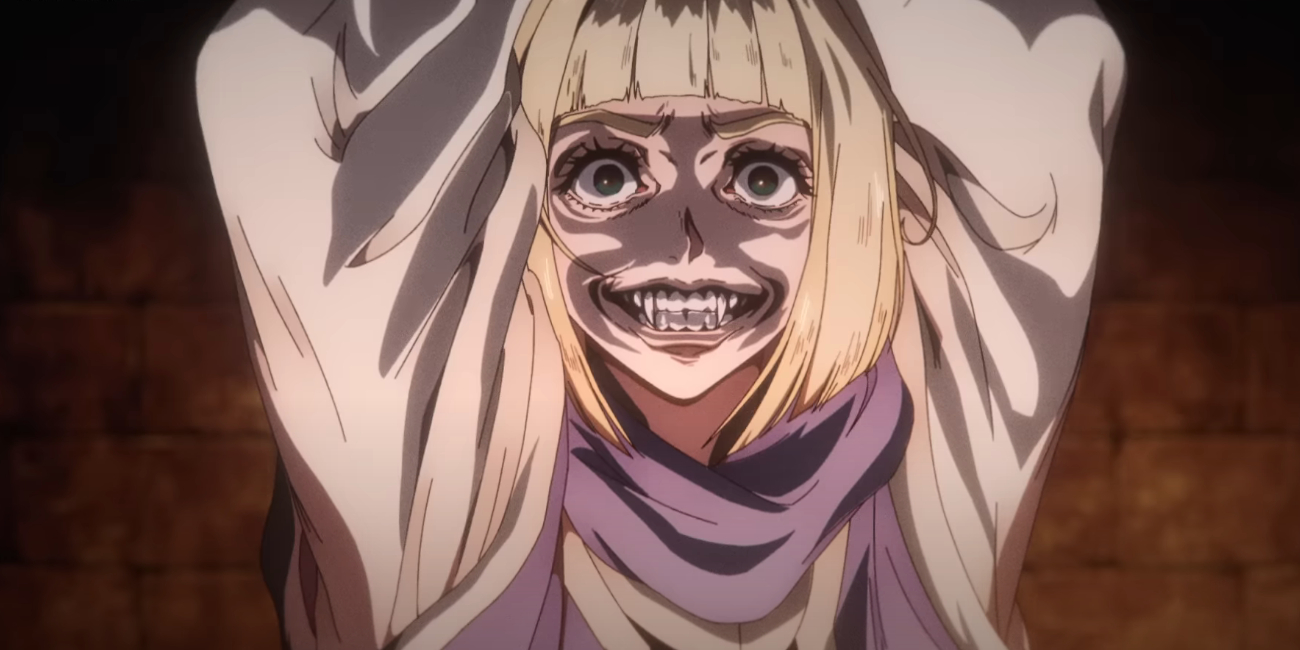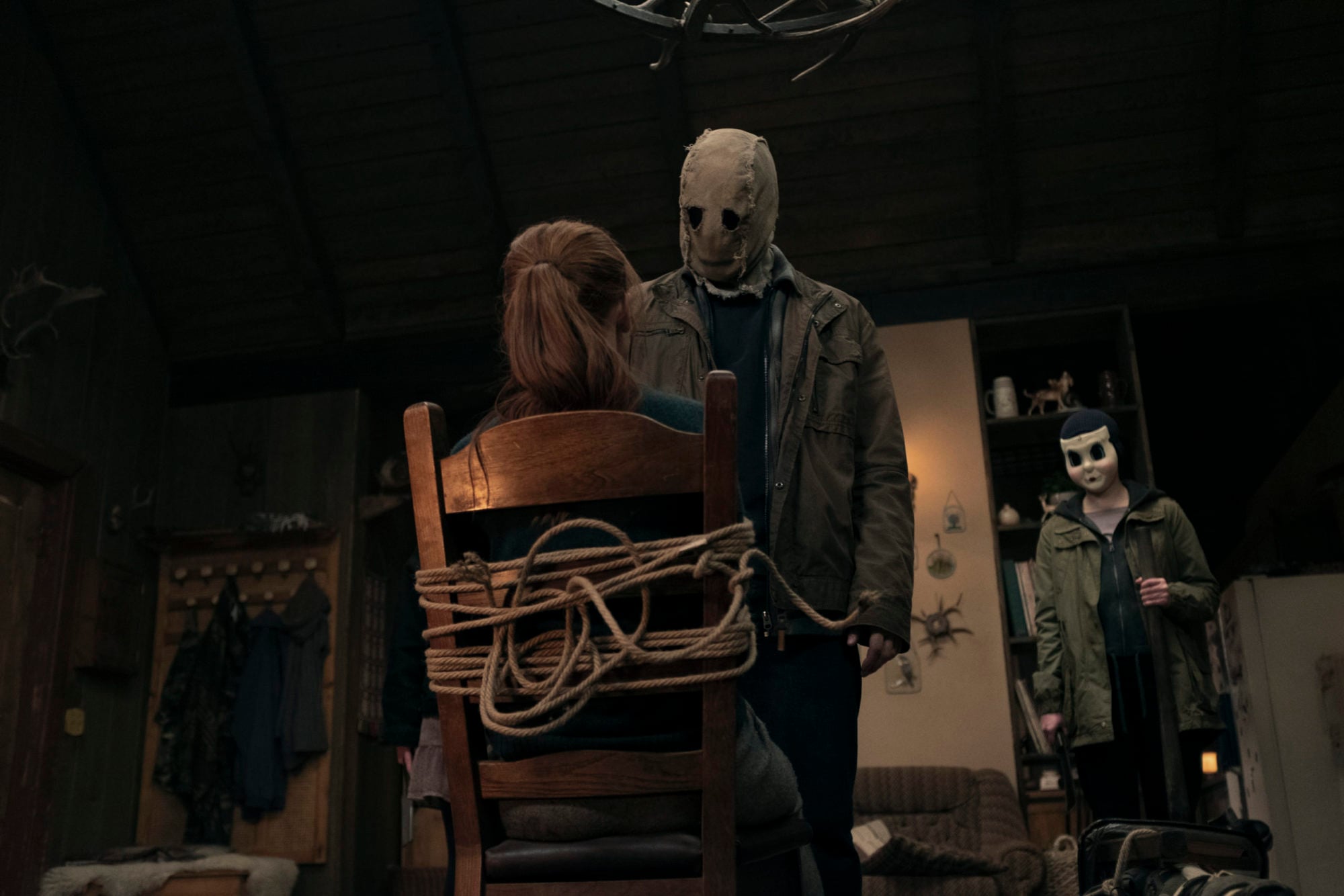Reviews
‘Castlevania: Nocturne’ Review – A Gory, Gorgeous Vampire Revolution Story

Castlevania: Nocturne quickly finds a fast-paced, blood-soaked rhythm in this satisfying sequel to the Netflix animated horror series.
“Warriors in arms. Family in hearts.”
Castlevania: Nocturne becomes another prolonged pursuit between skilled and sullen vampire hunters and the dark creatures that go bump in the night. This basic plot may not be groundbreaking and if anything it leans into the predictable premise of each Castlevania game. That being said, the first scene–an extended cold open that runs for a third of the episode–is really the perfect distillation of why Castlevania: Nocturne is worth watching. A stunning battle between Julia Belmont and Orlox, a 250-year-old vampire, plays out while multiple forms of magic release supernatural spectacles as the two battle to the bitter end. In a single scene, Richter Belmont’s entire purpose gets crystalized and sets him–and the series–off on a strong, confident note. Castlevania: Nocturne taps a rich vein that draws just as much fresh blood as its predecessor.
There’s such kinetic movement to all of the show’s combat and battle choreography where flowing spells, magical creatures, and spinning cameras keep these fights in constant motion and add a dizzying quality to these histrionics. Each fight is truly a visual marvel that combines incredible animation with vicious carnage. The series’ opening shot is the picturesque reflection of fireworks going off in water, which slowly ripples and separates as a boat passes through. It’s so beautiful and effortless as if Castlevania: Nocturne wants to immediately prove to the audience that its animation is immaculate and beyond criticism.
Castlevania: Nocturne gets just as creative with its night creatures, which are demons that are forged from human corpses. These episodes have fun with the limitless nature of what a demon can be. There are countless vampires and generic demons present, but also some inventive designs like multi-armed monsters, dragons, and medusa-like serpents. In fact, there’s a very Guillermo del Toro-esque quality to the series’ night creatures where none of these demons would feel out of place in Pan’s Labyrinth or Hellboy. The Vampire Messiah, in particular, manages to make Dracula look remarkably boring in comparison. Castlevania: Nocturne conjures some truly ghoulish images for its monsters and victims. The series embraces its horror influences just as much as it celebrates heightened action sequences.
Alternatively, there’s also such a sweet, sensitive beating heart to the series that reminds audiences that these are hurt people and not just grandiose action heroes and demon slayers. One of the series’ best sequences doesn’t involve any confrontations with demons and instead is a more muted moment of grief and reflection. Maria buries one of her magical familiars as she mourns the loss of part of herself while Eoudard immortalizes the memory through a melancholy aria (an aria of sorrow, if you will). It’s a beautiful scene about dedication and sacrifice where this group of heroes collectively expose their open wounds to each other. It’d be easy to remove such a moment in favor of more demonic duels, but these emotional scenes are as important as anything else in Castlevania: Nocturne. It’s not just about some war between good and evil, but the human cost of such conflict and how mounting losses can even make the living feel like they’re hollow and dead.
At Castlevania’s core, this is a story about revolution, power, and freedom, albeit one with vampires. Set in Western France on the cusp of the 19th century, crooked Kings, monarchies, and the aristocracy are a constant problem to this subjugated society. However, the Vampire Messiah–Countess Erzsebet Bathory–is also aligned with the old regime and pledges to make vampires masters of their own domains rather than a deadly extension of the aristocracy. This turns both the living and the undead into threats for Richter, Maria, and thier scrappy cabal of warriors as they fight against zealous monsters who strive to block out the moon and trigger eternal twilight so that demons can freely roam the Earth.

Castlevania: Nocturne finds a fun, effortless dynamic between Richter and Maria that’s not dissimilar to the banter that was present between Trevor Belmont and Sypha in the original Castlevania. Their riffing is often just as strong as their fighting. This duo naturally grows into a quartet as two more demon hunters, Annette and Edouard, become allies who are all united through similar trauma. Castlevania: Nocturne also makes sure to develop its vampire villains and their mysterious endgame goal just as well as it does Richter, Maria, and those who strive to end them. Every character, dead or alive, is rich in depth.
“I thought I was supposed to fight evil. I thought that was the whole point,” is the first line of dialogue that’s spoken in Castlevania: Nocturne, but this pledge also quickly becomes the series’ mission statement and guiding mantra across these eight episodes as the line between good and wicked gets increasingly blurred. Castlevania: Nocturne tells a satisfying story, but not necessarily a complete one. These episodes neatly set up what’s destined to be a deeper sophomore season, but Nocturne also feels more substantial than the original Castlevania’s first season, which functioned almost like an extended prologue. Kevin Kolde, Clive Bradley, Sam and Adam Deats, and executive producer Adi Shankar have created something special through this extension of the franchise.
Castlevania: Nocturne digs deeper and accomplishes much more than its predecessor. It doesn’t just feel like a tease, but rather the first act to a much greater war that can finally be properly tackled now that a certain familiar face has shown up. Nocturne goes out on an exceptional cliffhanger that should keep fans pleased until season two. The series is confident enough that it doesn’t need to stoop to such theatrics, but it certainly doesn’t hurt to cast the world in darkness and prepare for the next stage of this unholy war.



Reviews
‘The Strangers: Chapter 1’ Review – New Trilogy Kicks Off with a Familiar Start

Rebooting and expanding upon Bryan Bertino’s chilling 2008 horror film in a brand new trilogy, all installments already shot as part of one continuous, overarching story, makes for one of the more ambitious horror endeavors as of late. It also means that The Strangers: Chapter 1 is only the opening act of a three-part saga. Considering it’s the entry most committed to recreating the familiar beats of Bertino’s film, Chapter 1 makes for a tricky-to-gauge, overly familiar introduction to this new expansion.
The Strangers: Chapter 1 introduces happy couple Maya (Madelaine Petsch) and Ryan (Froy Gutierrez) on their way to starting a new life together in the Pacific Northwest. Car troubles leave them stranded in the quirky small town of Venus, Oregon, where they’re forced to stay the night in a cozy but remote cabin in the woods.
Naturally, the deeply in love couple soon find themselves in a desperate bid to survive the night when three masked strangers come knocking.

Madelaine Petsch as Maya in The Strangers. Photo Credit: John Armour
Director Renny Harlin, working from a 289-page screenplay by Alan R. Cohen & Alan Freedland that was broken into three movies, keeps Chapter 1 mostly self-contained to recapture the spirit of the original film. The core remains the same in that it’s reliant on the eerie stalking and escalating violence that builds toward a familiar conclusion, but Harlin mixes it up a bit through details and set pieces that hint toward the larger story around Venus itself. The early introductory scenes establishing both the protagonists and their setting offer the biggest clues toward the subsequent chapters, with the bustling diner giving glimpses of potential allies or foes yet to come- like the silent, lurking Sheriff Rotter (Richard Brake).
One downside to announcing this as a trilogy is that we already know that the successive chapters will continue Maya’s story, robbing more suspense from a film that liberally leans into its predecessor for scares. The good news is that Madelaine Petsch brings enough layers to Maya to pique curiosity and instill rooting interest to carry into Chapter 2. Maya begins as the gentler, more polite half of the young couple in love, but there’s a defiance that creeps through the more she’s terrorized. On that front, Petsch makes Maya’s visceral fear tangible, visibly quaking and quivering through her abject terror as she attempts to evade her relentless attackers.

The Strangers – Chapter 1. Photo Credit: John Armour
It’s her subtle emotional arc and quiet visual hints toward the bigger picture that tantalize most in an introductory chapter meant to entice younger audiences unfamiliar with the 2008 originator. The jolts will have a harder time landing for fans of Bertino’s film, however, even when Harlin stretches beyond the cabin for stunt-heavy chase sequences or gory bursts of violence. It’s worth noting that Harlin’s tenured experience and cinematographer José David Montero ensure we can grasp every intricate stunt or chase sequence with clarity; there’s no worry of squinting through the dark, hazy woods to make out what’s happening on screen. A more vibrant color palette also lends personality to Venus and its residents.
The Strangers: Chapter 1 exists in a unique place in that it’s the first 90 minutes of what will amount to a roughly 4.5-hour movie yet doesn’t give much away at all about what’s ahead, presenting only part of the whole picture. Chapter 1 does a sufficient job laying the groundwork and delivering horror thrills but with a caveat: the less familiar you are with The Strangers, the better. Harlin and crew get a bit too faithful in their bid to recreate Bertino’s effective scares, even when remixing them, and it dampens what works. The more significant departures from the source material won’t come until later, but look to a mid-credit tease that sets this up.
The Strangers: Chapter 1 doesn’t establish enough of its own identity to make it memorable or set it apart, but it’s just functional enough to raise curiosity for where we’re headed next.
The Strangers: Chapter 1 releases in theaters on May 17, 2024.














You must be logged in to post a comment.